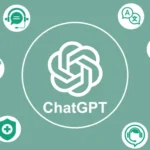Exploring ChatGPT Limitations : Exploring Our AI Companion
When we’re exploring ChatGPT AI, we’ve gotta clear up how it ticks and where it might trip up now and then. Knowing how ChatGPT gobbles up data and its limits with real-time info gives us a good grasp on how it works.
Understanding ChatGPT’s Data Usage
ChatGPT Limitations come into play when considering its knowledge base, which is built on information collected up until September 2021. This treasure trove of data powers its ability to assist and converse, much like flipping through an old encyclopedia—rich in facts but lagging behind on the latest updates. While this historical knowledge forms the foundation of ChatGPT’s responses, it’s important to remember that it isn’t equipped to handle current events or emerging trends due to the outdated nature of its data.
Read also: ChatGPT Reviews : Experiences Shared
Limitations of Real-Time Information Access
One key aspect of ChatGPT Limitations is its inability to browse the web for real-time updates. This means it might not be up-to-date on the latest news or live developments. So, if you’re looking for breaking news or trending topics, ChatGPT might come up short—kind of like asking your grandma about the newest app everyone’s raving about.
Being aware of these limitations helps set realistic expectations. By understanding where ChatGPT excels and where it might stumble, we can make the most of our interactions. Recognizing its reliance on pre-2021 data and lack of live information ensures we use it effectively for what it does best.
Table of Contents
- Understanding ChatGPT’s Data Usage
- Limitations of Real-Time Information Access
- Challenges Faced by ChatGPT
- Handling Long-Form Structured Content
- Bias in Responses
- Nuances and Limitations
- Contextual Understanding Issues
- Lack of Common Sense and Background Knowledge
- User Considerations with ChatGPT
- Accuracy and Reliability Concerns
- Language and Customization Constraints
Challenges Faced by ChatGPT
Let’s dive into some of the ChatGPT Limitations. One of its main challenges is managing lengthy conversations while staying coherent and contextually accurate. Another hurdle is ensuring it remains neutral, steering clear of personal biases that could slip into responses. These challenges highlight the complexity of creating an AI that balances depth, accuracy, and impartiality in every interaction.
Handling Long-Form Structured Content
One of the ChatGPT Limitations is handling long, detailed inputs. When faced with lengthy, complex content—like summarizing a novel in one go—it can struggle to deliver a fully accurate or cohesive response. It’s similar to asking a friend to condense War and Peace during a quick coffee chat—some key details are bound to get lost.
A smart workaround? Break it down into smaller, more digestible chunks. Think of it like feeding ducks at the pond—smaller pieces are easier to manage. For precise and focused replies, keeping your inputs short and straightforward is the way to go.

Bias in Responses
Let’s talk about one of the ChatGPT Limitations: bias. Like humans, ChatGPT can inherit some biases from the data it’s trained on. This can sometimes lead to answers that lean too far in one direction—imagine a well-meaning friend who’s picked up too much influence from social media.
The good news? OpenAI is constantly fine-tuning and scrutinizing the training data to weed out inaccuracies and biases. Still, it’s wise to stay alert, especially when discussing sensitive topics. A touch of healthy skepticism can go a long way.
These challenges make the journey of improving ChatGPT all the more fascinating. The goal is clear: to refine its understanding and ensure it delivers fair, unbiased, and helpful responses. It’s an ongoing process, but every step brings us closer to making ChatGPT as reliable and balanced as any trusted friend.
Read also: Claude AI Review
Nuances and Limitations
Diving into ChatGPT Limitations is like unraveling a mystery—fascinating, yet revealing a few quirks along the way. Two of the more common challenges are misinterpreting context and occasionally stumbling on good old-fashioned common sense. These hiccups can lead to responses that might miss the mark or feel a bit off, reminding us that even advanced AI has its blind spots. Recognizing these limitations helps us use ChatGPT more effectively while appreciating its potential for continuous improvement.
Contextual Understanding Issues
One of the ChatGPT Limitations is its occasional struggle with understanding context, especially when it comes to humor or sarcasm. Have you ever tried sharing a joke with it, only to get a serious reply? That’s because humor and layered language often slip past its radar. While ChatGPT excels at straightforward communication, it can stumble when language takes on a more nuanced or playful tone, sometimes leaving you puzzled about how it got things so wrong.
Lack of Common Sense and Background Knowledge
There’s also the puzzle of common sense—or lack thereof. Unlike us, with our lifetime of what we’ve seen, heard, or done, ChatGPT runs on the data it’s been fed. This means sometimes it might spit out answers that make you go, “what the heck?” It doesn’t “know” the world like you or me, especially when the topic needs a little bit more of that human touch.
Top marks for trying, though—here we are, making strides with AI and trying to get it to understand how we chat. Knowing about these bumps in the road helps when you’re figuring out how to use ChatGPT. Curious about more fun facts and what ChatGPT can do? Check out our article on chatgpt capabilities.
Read also: Claude AI Pricing Options
User Considerations with ChatGPT
When using ChatGPT Examples, it’s helpful to understand how it operates and where it might occasionally miss the mark. Key areas to consider are its accuracy, reliability, and ability to handle language effectively. While it’s impressive at processing and responding, there are moments where it might falter, reminding us of the limitations inherent in even the most advanced AI systems. Knowing these quirks helps set realistic expectations and make the most of what ChatGPT has to offer.
Accuracy and Reliability Concerns
Here’s a key point about ChatGPT Limitations: it’s not always perfectly accurate. Why? Its responses are based on patterns from the data it was trained on, rather than real-time internet access or a live encyclopedia. This means it can sometimes miss the fine details or deliver information that needs fact-checking.
If you’re seeking precise, up-to-date information, it’s wise to double-check what ChatGPT provides. Think of it like when a friend shares a wild news story—you’ll probably want to verify it to make sure it’s not just an urban legend. This approach helps you make the most of ChatGPT while staying grounded in accurate facts.
| Accuracy and Reliability | Description |
|---|---|
| Data Source | Trained on old text, not live updates |
| Error Checking | Use your noggin and verify facts |
| Credible Sources | Cross-check with trusted sources |
Read also: WordPress Plugins for Affiliate Marketing
Language and Customization Constraints
When it comes to ChatGPT Limitations, its way with words sometimes has a one-size-fits-all feel. Trained on a broad mix of data, it can struggle with slang, cultural nuances, or regional dialects. While it aims to be everyone’s go-to AI buddy, it might miss the mark with cultural in-jokes or specific linguistic quirks.
If you’re after something highly personalized—like crafting a custom rap battle or diving deep into advanced rocket science—it might fall short. Its training data can confine it to a comfort zone, making it less effective in scenarios that demand exceptional creativity or technical depth. Understanding these limitations helps set realistic expectations for its performance.
| Language and Customization | Description |
|---|---|
| Language Adaptability | May stumble with different slang or dialects |
| Personalization | Can struggle with custom requests or preferences |
| Specialized Knowledge | May not deliver expert-level insight |
Knowing this, you can roll with ChatGPT confidently while acknowledging its bumps in the road. It’s a tool, not the oracle. Use it to complement your own smarts and reliable info from elsewhere.
Read also: WordPress Plugins for Affiliate Marketing





